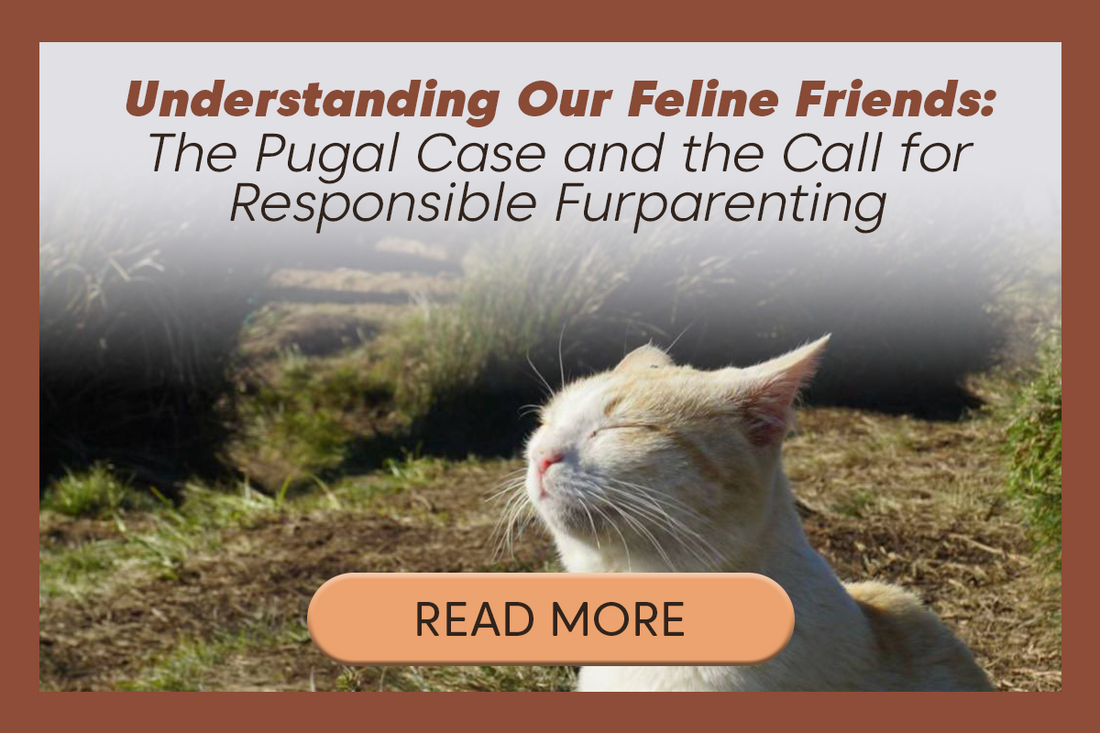
The Pugal Case and the Call for Responsible Furparenting
Share
Understanding Our Feline Friends: The Pugal Case and the Call for Responsible Furparenting
By Ma. Adreanne Justine N. Co, DVM.
Do you remember Pugal, the domestic shorthair cat who captured the hearts of many after going viral on social media? He made headlines when he was removed from Mt. Pulag, a protected area known for its rich biodiversity. While the incident sparked debates online, it also highlighted a deeper issue: the lack of awareness and the responsibility of pet owners and stewards of nature. We must understand why such occurrences happened and to better understand the behavior and needs of our feline companions.
Why Was Pugal’s Removal Necessary?
Though Pugal appeared to be a friendly and harmless cat, his presence in Mt. Pulag posed a threat to the area’s delicate ecosystem. Domestic cats, no matter how tame, are natural hunters. Their instincts can endanger local wildlife, especially in places where endangered species are trying to thrive. The mountains of Mt. Pulag are home to several protected animals, and the introduction of a predator, even a beloved house cat can disrupt the balance of nature.
This serves as a reminder that responsible pet ownership extends beyond the home. As much as we love our pets, we must consider the potential impact they may have on wildlife and the environment.
Cats and Their Natural Instincts
Cats are obligate carnivores, biologically wired to hunt for their food. In the wild, they rely on prey like rodents, birds, and fish not only for nourishment but also for hydration. These natural prey items are rich in moisture and taurine, an essential amino acid for feline health (usually deficient in cats).
This explains why many cats have a low drive to drink water. In nature, they receive most of their hydration from their food. When domesticated, however, they rely on their owners to ensure they get enough water. Some pet owners notice that their cats prefer running water over still water in bowls. This is an instinctive behavior wild cats seek out clean, moving water from streams or rivers. At home, offering water fountains or changing the water frequently can help encourage hydration.
Social Behavior of Cats
Contrary to the common belief that cats are solitary animals, they do have a social structure especially when left to form natural groups. According to the Merck Veterinary Manual, feral cats often form colonies made up of related females and their young. These groups allow for cooperative rearing of kittens and provide social interaction that contributes to healthy development.
Cats also have a critical socialization window between 2 to 9 weeks of age. Kittens who are handled by humans during this time tend to grow into friendlier and more sociable adult cats. On the other hand, kittens that miss this opportunity may develop fear or behavioral issues later on. Genetics also play a role in shaping a cat's personality; traits such as playfulness, boldness, and shyness may be inherited, particularly from the father.
Social play such as biting, chasing, and play-fighting starts around four weeks of age and is essential for behavioral development. Providing play opportunities using wand toys or play sessions with other cats helps prevent aggression and behavioral problems in adulthood.
Reference:
Merck Veterinary Manual, “Social Behavior of Cats”
Reviewed/Revised May 2014 | Modified September 2024
Contributors: Mikel Delgado, Leticia M. S. Dantas, Gary M. Landsberg, Sagi Denenberg
Feeding Habits and Mental Stimulation
Feeding is not just about physical nourishment, it plays a vital role in a cat’s mental and emotional well-being. According to veterinary behaviorists Delgado, Dantas, Landsberg, and Denenberg, cats in the wild eat multiple small meals throughout the day. However, most pet cats are either free-fed or fed twice daily, which may not align with their natural feeding instincts.
To simulate natural behaviors, owners are encouraged to use foraging enrichment tools like food puzzles. These offer mental stimulation, prevent boredom, and reduce the likelihood of problem behaviors. This is especially helpful in multi-cat households where stress over feeding time can lead to aggression or anxiety. Other key feeding recommendations include: Avoiding free-feeding when possible to help control weight and prevent obesity. Offering a variety of food textures and flavors during kittenhood to avoid future pickiness. Using food for behavioral training and enrichment . Adjusting meal schedules and feeding stations to suit the cat’s preferences and household dynamics
Reference:
Delgado M., Dantas L., Landsberg G.M., Denenberg S.
“Feeding Behavior and Management of Cats.”
University of California-Davis & University of Georgia, September 2024
Final Thoughts
Cats are complex creatures. Behind those soft paws are natural hunters with deep-rooted instincts and social needs. Whether it’s understanding why they won’t drink from a water bowl, or why they prefer playing with your socks at 3 a.m., every behavior has a biological and emotional explanation.
By learning more about feline behavior, we not only improve our pets’ well-being but also grow as more responsible and compassionate pet owners. Let’s continue to love our cats not just with affection but with awareness and understanding.
